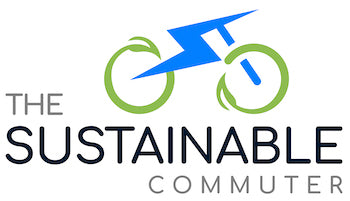
Sustainable Transportation Programs: Promoting Eco-friendly Travel Options for a Greener Future
Share
What are Sustainable Transportation Programs?
Sustainable transportation programs are initiatives and policies implemented by governments, organizations, and communities to promote environmentally friendly modes of travel. These programs typically focus on reducing the use of private vehicles, increasing the use of public transportation, and encouraging alternative modes of transportation such as cycling and walking. By prioritizing sustainable transportation options, cities can reduce traffic congestion, improve air quality, and create a more equitable and accessible transportation system.The Benefits of Sustainable Transportation Programs
There are numerous benefits associated with sustainable transportation programs, both for individuals and communities as a whole. Some of the key benefits include:
Reducing Carbon Emissions: Transportation is one of the largest sources of greenhouse gas emissions globally. By promoting sustainable transportation options, we can significantly reduce carbon emissions and combat climate change.
Improving Air Quality: Traditional transportation systems contribute to air pollution, which has detrimental effects on human health. Sustainable transportation programs prioritize modes of travel that produce fewer emissions, leading to improved air quality and better health outcomes.
Enhancing Mobility and Accessibility: Sustainable transportation programs aim to provide accessible and affordable transportation options for all members of society. This includes improving public transportation systems, creating cycling and walking infrastructure, and implementing policies that prioritize the needs of pedestrians and cyclists.
Reducing Traffic Congestion: Traditional transportation systems often result in heavy traffic congestion, which leads to wasted time, increased fuel consumption, and higher levels of air pollution. By promoting sustainable transportation options, cities can reduce traffic congestion and improve the overall efficiency of the transportation system.
Sustainable Transportation Initiatives
There are several key initiatives and programs that are promoting sustainable transportation around the world. Some of these include:
Public Transportation Systems: Investing in and expanding public transportation networks is a crucial aspect of sustainable transportation programs. By providing efficient, affordable, and accessible public transportation options, cities can reduce the reliance on private vehicles and encourage more people to choose sustainable modes of travel. Some cities have implemented innovative solutions, such as Bus Rapid Transit (BRT) systems, which prioritize buses and provide dedicated lanes, resulting in faster and more reliable service.
Cycling Infrastructure: Creating safe and connected cycling infrastructure is another important aspect of sustainable transportation programs. By building dedicated bike lanes, providing secure bike parking, and implementing bike-sharing programs, cities can encourage more people to choose cycling as a viable transportation option. Copenhagen, for example, is known for its extensive cycling infrastructure, which has resulted in over 60% of the population commuting by bicycle.
Carpooling and Ride-sharing: Carpooling and ride-sharing programs are gaining popularity as effective ways to reduce the number of vehicles on the road. These programs connect individuals traveling in the same direction, allowing them to share rides and reduce their carbon footprint. Companies like Uber and Lyft have also introduced carpooling options, making it easier for people to share rides and reduce congestion.
Electric Vehicles: The transition to electric vehicles (EVs) is a significant step towards sustainable transportation. EVs produce zero tailpipe emissions, reducing air pollution and carbon emissions. Governments and organizations are providing incentives for the purchase of EVs, such as tax credits, rebates, and access to charging infrastructure. Companies like Tesla and Nissan are leading the way in the production and popularization of electric vehicles.
How Financial Organizations Can Support Sustainable Transportation
Financial organizations, such as Citibank, can play a vital role in supporting sustainable transportation initiatives. Here are some ways they can contribute:
Investing in Sustainable Projects: Financial organizations can invest in sustainable transportation projects, such as the development of public transportation systems, cycling infrastructure, and EV charging infrastructure. By providing funding and support for these projects, financial organizations can help accelerate the transition to sustainable transportation.
Financial Incentives for Electric Vehicles: Financial organizations can offer incentives for the purchase of electric vehicles, such as discounted loan rates or special financing options. By making EVs more affordable and accessible, financial institutions can encourage more people to choose electric vehicles over traditional gasoline-powered cars.
Providing Access to Low-Interest Loans: Financial organizations can provide low-interest loans for purchasing electric vehicles or installing sustainable transportation infrastructure, such as bike-sharing programs or charging stations. This can make sustainable transportation options more accessible to individuals and communities.
Conclusion
Sustainable transportation programs are essential in our quest for a greener future. By promoting eco-friendly modes of travel, we can reduce the environmental and social impacts of traditional transportation systems. Financial organizations, such as Citibank, can play an important role in supporting sustainable transportation initiatives by investing in sustainable projects, providing financial incentives for electric vehicles, and offering low-interest loans. Together, we can create a more sustainable and equitable transportation system that benefits both individuals and the planet.
